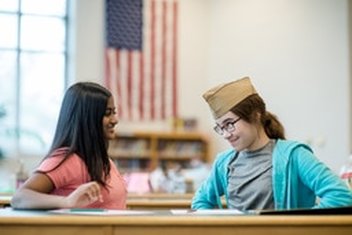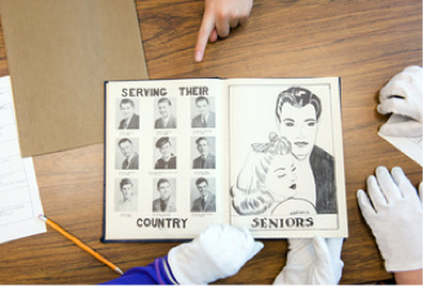Reading an Artifact
 Photo by Donnie Biggs, FCPS
Photo by Donnie Biggs, FCPS
If you are a self-proclaimed history nerd, you know that artifacts have amazing powers. We want to impart a love of objects to our students or at least to lead them to understand that objects can connect us to our past in ways that textbooks cannot (We hope you do too!). To help students unlock these powers, the Kilmer History Department brought historic objects (thanks to Operation Footlocker) into our Kilmer Library for student exploration.
We've developed this step by step organizer to help students "read" artifacts based on Workshop Video: "Twenty Years, Twenty Questions to Ask an Object" (Material Culture Caucus, American Studies Association). Shout out to Mount Vernon and its amazing professional development for introducing us to this idea.
The organizer can easily be adapted for different grade levels. As an extension you could invite students to bring in their own artifacts for the class to analyze.
You can read more about our use of artifacts at Kilmer in our blog post "The Magical Power of Artifacts." There you also will find resources for using artifacts across a range of subject areas. But if you are in a hurry (and teachers usually are) here are a few of our favorites:
- Operation Footlocker, The National World War II Museum
- Kilmer MS's Operation Footlocker Object Analysis Handouts (option A | option B): This is the work of our History Collaborative Team
- If this Artifact Could Talk... organizer
- Mt. Vernon Teacher Resources (including collections, lesson plans, information on their professional development opportunities)

